Menu

Yes, there is and, it isn’t what you think.
By Deirdre McFarland, SVP, Marketing
"After all, it's just one banana, Michael. What could it cost, $10?"
 On Arrested Development, family matriarch Lucille Bluth's comment was meant as a joke, but it feels almost possible today with inflation hitting 40-year-highs.
On Arrested Development, family matriarch Lucille Bluth's comment was meant as a joke, but it feels almost possible today with inflation hitting 40-year-highs.
Suppose you're a brand looking to engage category or brand purchasers in higher-income households. In that case, you may be surprised to learn inflation is having an unexpected effect on this audience's spending.
As it turns out, these buyers are less inclined to be brand loyal during inflationary periods. That means you'll have to work harder to retain their business, especially if you raise your prices.
Even more than households with lower incomes, higher-income consumers are taking more concrete steps to rein back spending right now. They're more likely to be putting their money into savings as inflation remains high, according to a recent consumer sentiment survey commissioned by NCSolutions.
In addition, more than seven in 10 higher-income households say they're being more mindful of how they're spending their money. But how were the other income-level households responding to inflation? We asked, and they answered.
How are different income-level households responding to inflation?
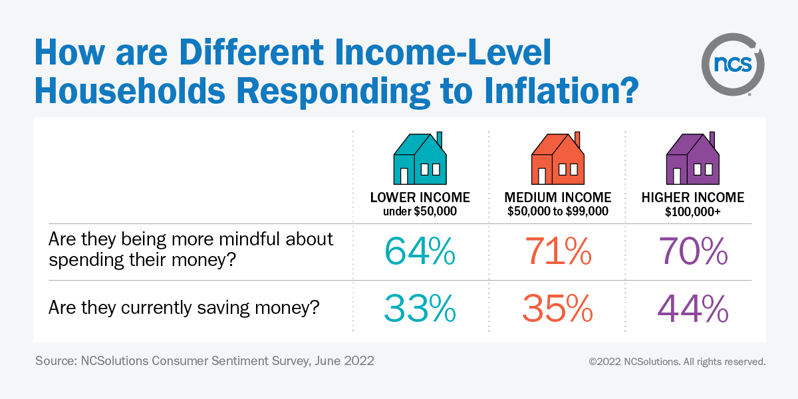 Brands looking to attract category or brand purchasers in higher-income households should set aside any preconceived notions. Don’t assume your high-income customer will continue to pay for their favorite brands just because they have disposable income.
Brands looking to attract category or brand purchasers in higher-income households should set aside any preconceived notions. Don’t assume your high-income customer will continue to pay for their favorite brands just because they have disposable income.
Instead, the following three strategies will help you meet these consumers where they are in this inflationary moment.
Refocus messages on deals and value
Higher-income households can surely afford their favorite brands, yet they’re more likely to pass and save than lower-income households. Those who make the most amount of money are more likely to switch out their favorite brands if their price increases.
Even Lucille might balk at the price of some of her favorite brands if, as her son, Michael, pointed out, she had ever stepped foot in a grocery store before. Are consumers responding as extreme as Lucille would? We asked, and they answered again.
How would different income-level households respond if their favorite food brands were no longer in their budget?
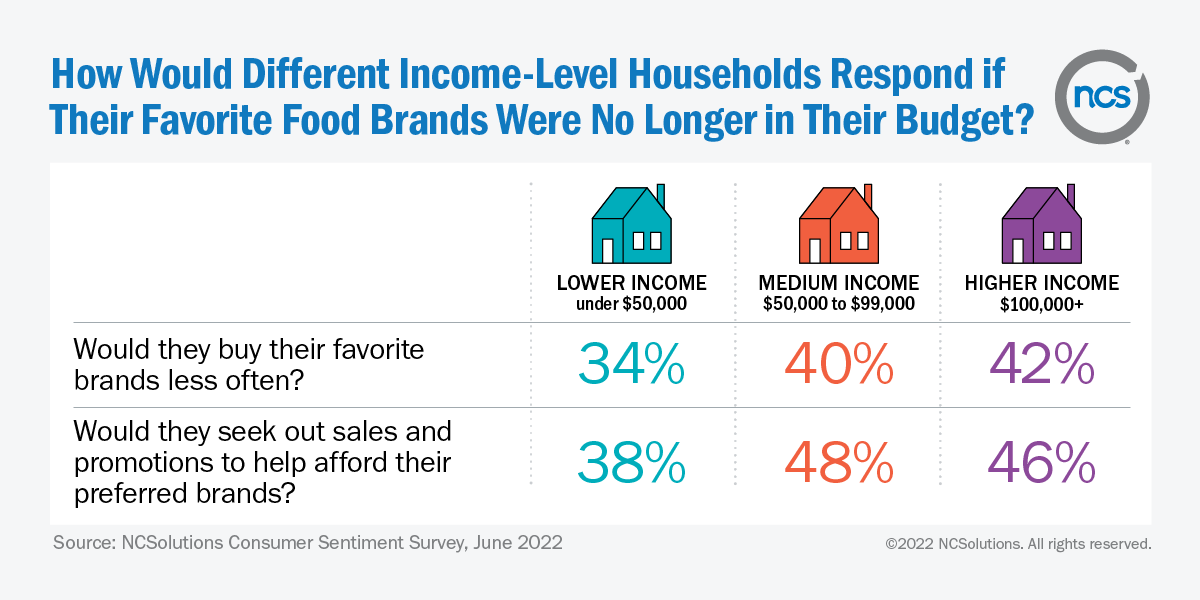 Since these buyers are more likely to seek deals and less likely to stick with favored brands, your messaging to category or brand purchasers in higher-income households needs to demonstrate value. On the other hand, if you’re a challenger brand, this is a great opportunity to win new business by promoting a message of price savings and value.
Since these buyers are more likely to seek deals and less likely to stick with favored brands, your messaging to category or brand purchasers in higher-income households needs to demonstrate value. On the other hand, if you’re a challenger brand, this is a great opportunity to win new business by promoting a message of price savings and value.
Cultivate - and keep - your hard-won brand loyals
Even the most brand-loyal customers will reconsider their purchases in an inflationary market where their favorite brands suddenly cost 12.8% or more. Brand loyalty is a complicated relationship with your buyers, and it will deteriorate over time if it’s not nurtured.
It’s not only about your customers keeping your brand top of mind today. If you lose that loyalty, you may never get it back. They may find they like your competitor's product better. Or maybe they just forget they ever liked yours.
Either way, that’s a costly loss for any brand. The biggest truism in marketing is that it costs 5x more to acquire new customers for most brands.*
To keep your hard-won loyals, you must continue cultivating brand buyers and reminding them why they love your brand. On the flip side, if you're advertising and your competitors aren't, you could be winning new customers who are left behind by the brands they previously loved.
No Reason to Stop Advertising
As companies look to reduce costs during uncertain economic times, they’re often inclined to stop advertising. The best approach is to understand consumer purchase behavior and adapt your advertising strategy to changes. As our survey results show, different strategies are required for category and brand buyers at different levels of income. Motivating shoppers to buy your products means being in-market and on message for each household buyer.
Maintaining brand loyalty during this time will be a challenge, but it’s impossible unless you continue advertising. Our research shows even those making the most money are sensitive to price increases, so be sure to emphasize your product's value and don't shy away from deals and sales.
In our recent study, Food-Flation, we looked at how high inflation impacts consumers and their shopping behaviors. This blueprint for advertisers offers ways to best communicate to target audiences during these challenging times and to maintain the brand loyalty you’ve worked so hard to create. Download our ebook to learn more:
Subscribe for Updates
GET INSIDE THE MINDS OF CPG BRAND MARKETERS
Learn about their data-fueled strategies
SNAG YOUR COPY OF THE REPORT TODAY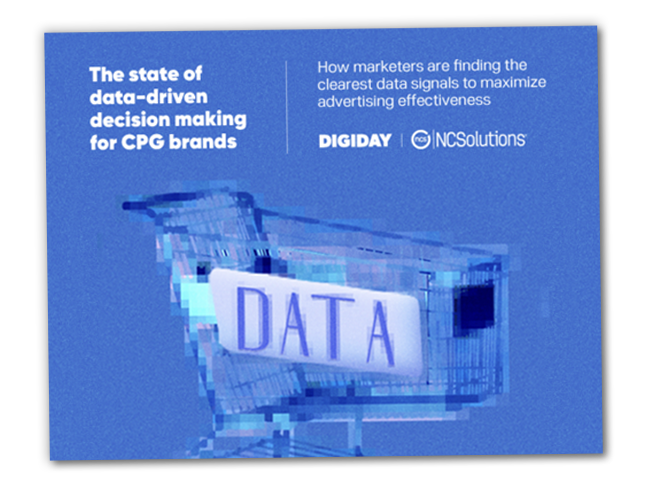
WONDERING HOW CONSUMERS RESPOND TO INFLUENCER MARKETING?
See how creating content drives results
DOWNLOAD YOUR COPY NOW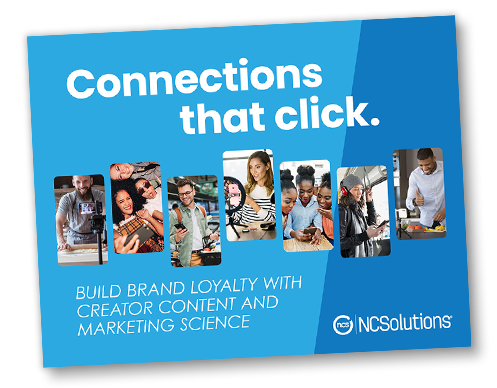
WANT TO KNOW MORE ABOUT HEALTH AND ECO-MINDED SHOPPERS?
Get CPG insights to engage your buyers
ACCESS THE E-BOOK TODAY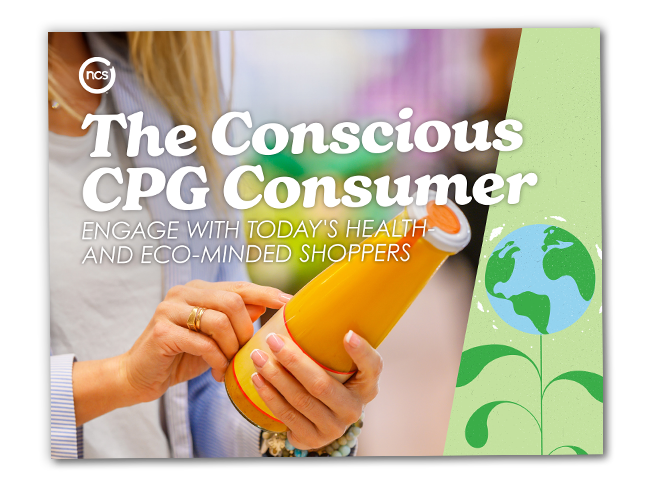


.png)
.png)

